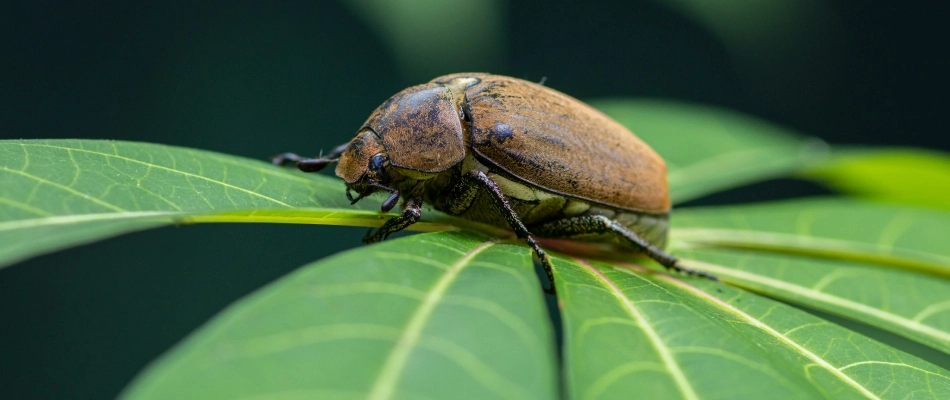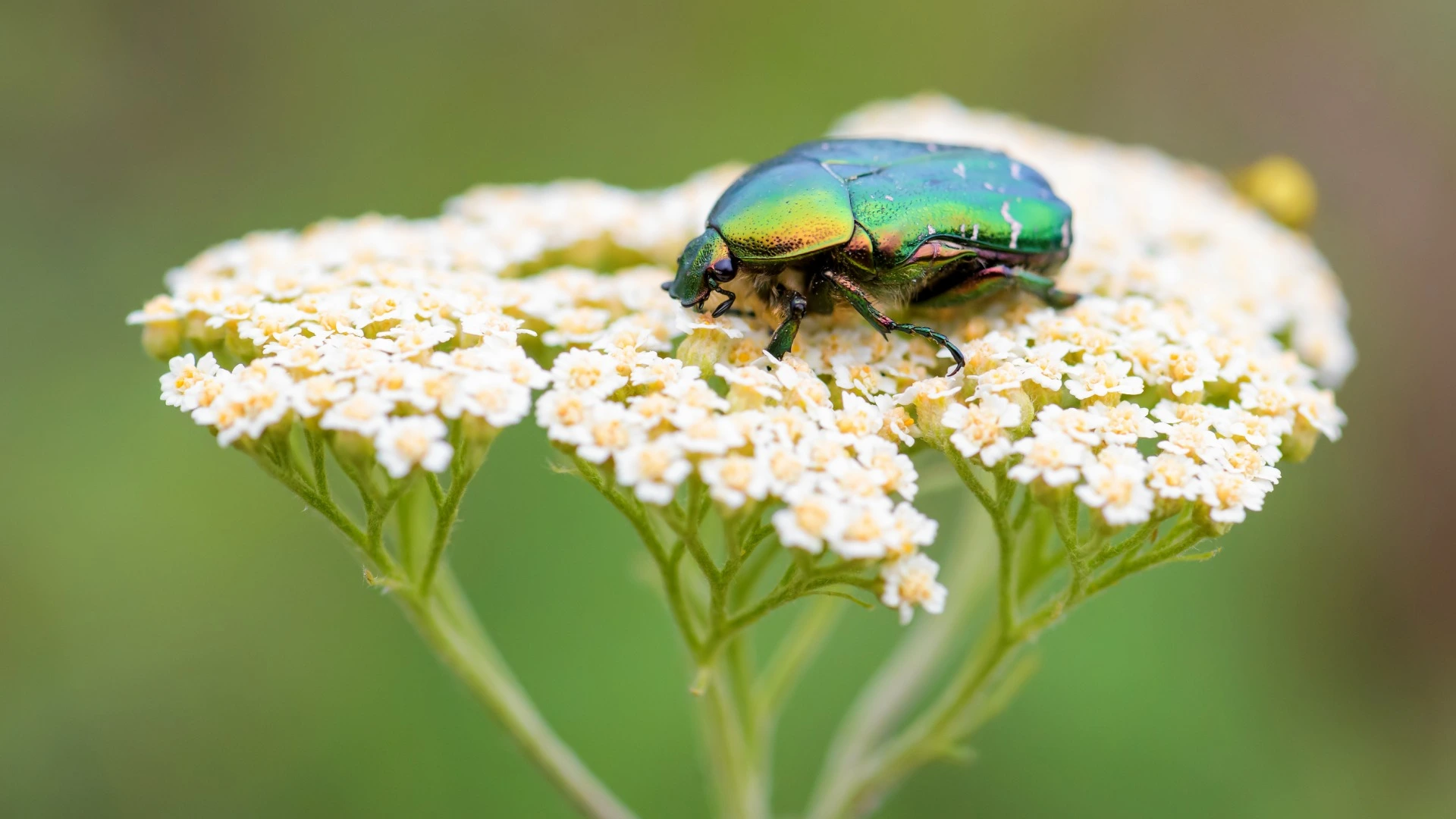European chafer season is here in Michigan, and it’s time to make sure your lawn is prepared for these pests. European chafers are a type of beetle that lays eggs in your soil, and when they hatch, they can end up doing tremendous damage to your turf. The best way to handle European chafer grubs is with preventative treatments to stop them before they become a problem, which should be scheduled at two different times in the year to keep your lawn protected. If you find that you missed the window to schedule a preventative treatment, and you’re now facing an infestation of these pests, then don’t worry! You can still schedule curative treatments to deal with them, and then you can focus your efforts on nursing your lawn back to health using various lawn care services. Continue reading to learn more about European chafers and what you can do about them!
What are European chafers, and how do they damage your lawn?

European chafers are small, tan beetles that emerge from your soil in June and July. After emerging, they begin laying eggs in your soil. European chafer eggs will then hatch in August, and the grubs will start feeding on the roots of your grass from August to November. The grubs will overwinter when the soil freezes, and they’ll re-emerge once the weather warms up in spring. That’s when you’ll catch them munching on the roots of your grass again from March to May. Both grubs and beetles will damage your lawn by feasting on the roots of your grass, which will weaken it and turn it brown. If an infestation goes unchecked, these pests can end up destroying your entire lawn. This is why you should be ever vigilant and address European chafers before they can escalate into a major problem.
Schedule preventative treatments to stop European chafers from infesting your lawn.
When dealing with European chafers, you’ll want to schedule preventative treatments to keep them from ever getting a foothold in your lawn. Preventative treatments work by destroying eggs before they hatch or eliminating newly hatched grubs so they don't ever get the chance to start feasting on the roots of your grass. Due to their life cycle, it’s best to apply preventative treatments twice per year. The first window is in early August to put a stop to grubs that would normally appear in the fall. The second window is in early March before the grubs start feeding on the roots of your grass again after winter. Scheduling preventative treatments during these two windows is essential to keeping your lawn safe from a European chafer infestation year-round.
If you missed the window for preventative treatment, schedule a curative treatment instead.

If you missed your chance to schedule a preventative treatment for European chafers, then you still have the option of scheduling a curative treatment to get rid of them. Curative treatments target and eliminate the larger grubs feeding on the roots of your grass. The only issue is that you’ll be left with lawn damage even after the grubs are dealt with, and you’ll have to schedule additional lawn services to nurse your lawn back to health.
Schedule services like fertilization, aeration, and overseeding to restore your vibrant lawn after dealing with European chafers.
Protect your lawn from European chafers. Call us today to schedule our European chafer treatment!
European chafers, if left unchecked, can do extensive damage to your lawn. These are common pests in Michigan, so you want to ensure your lawn remains protected throughout the year. At Big Lakes Lawncare, we offer preventative treatments in both March and August, and if you missed the window for preventative treatments, then you can still schedule one of our curative treatments at any time. We service commercial, HOA, and residential properties in Macomb, MI and in surrounding cities like Shelby and Chesterfield. Call us today at (586) 200-0855 to schedule our European chafer treatment and keep your lawn safe from these pesky insects!




Comments (0)
Thanks for your comment!
Thanks for your feedback! Your comments have been successfully submitted! Please note, all comments require admin approval prior to display.
Error submitting comment!
There is a problem with your comment, please see below and try again.